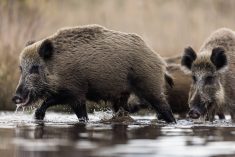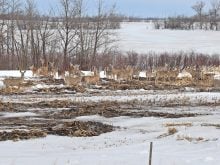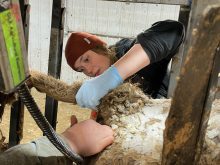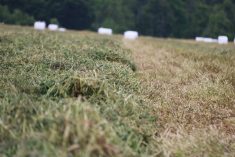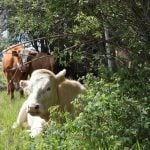A curtain has fallen around the British Isles as more reports of foot-and-mouth disease are confirmed in swine, cattle and sheep.
As of Feb. 25, Great Britain had destroyed and incinerated 1,300 pigs, 450 cattle and 250 sheep on six farms to prevent further spread of the disease.
Canada does not import British pork but live pigs have been allowed in as breeding stock.
Foot-and-mouth has not been detected here since 1952. No cattle or beef products have been allowed in the country since 1993 due to bovine spongiform encephalopathy.
Read Also
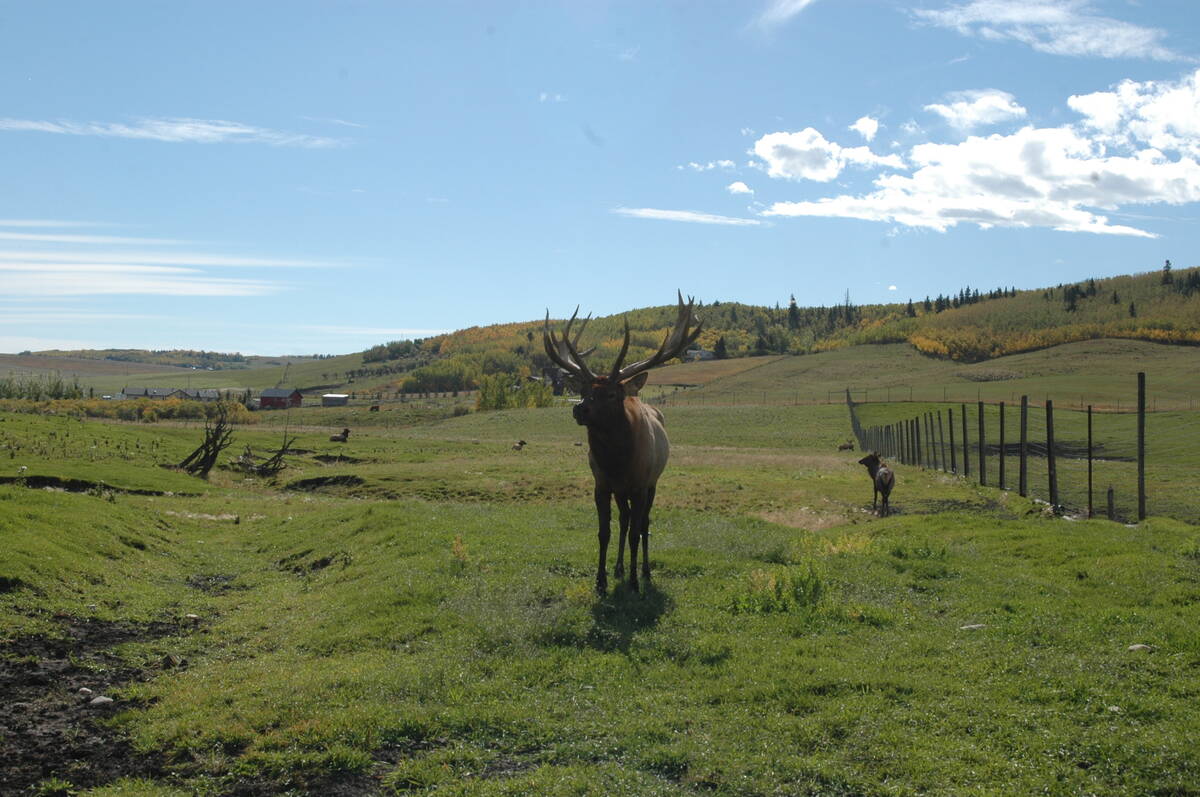
Feds propose overhaul of chronic wasting disease control program
Chronic Wasting disease control program getting updated by Canadian Food Inspection Agency with feedback encouraged from producers.
“The British have been so overwhelmed with diseases, almost nothing has been coming in (to Canada),” said Martin Rice of the Canadian Pork Council.
The United Kingdom has already been forced to destroy thousands of pigs because of hog cholera and classical swine fever.
A group of pigs was in quarantine for export as breeding stock to Canada, but since the recent outbreak that deal has been suspended, said Rosemary Evangelisto of the Canadian Swine Exporters association.
No new genetics have arrived in the last six months, she said.
Canadian hog producers have been observing with sympathy and concern. Livelihoods have been lost and years of genetic selection destroyed.
“It’s kind of scary for us. Our country is not regionalized. If a case broke out in B.C., we could not export from Quebec or Ontario,” said Evangelisto.
No one knows how the disease started in the U.K., said Claude Lavigne of the Canadian Food Inspection Agency.
“It looks like when the outbreak was found, it was in more than one place,” said Lavigne.
That implies the disease was probably introduced for some time before it was detected. Laboratory tests are required to confirm the disease.
It has an incubation period of about a week.
The CFIA has issued a ban on swine embryos, swine semen, live swine, pork products and by-products. Cattle genetics were already banned due to BSE.
Highly contagious
Foot-and-mouth disease is a severe and highly contagious disease of swine, cattle, sheep, deer, goats and bison. It does not affect horses.
Blisters occur on the nose, tongue, lips, between the toes, above the hooves and on the teats. Animals cannot eat properly when their tongues and lips are affected. Calves and piglets cannot nurse because the teats are sore.
Foot lesions are accompanied by acute lameness and reluctance to move. Additional signs include fever, depression, loss of appetite or milk production.
Infected animals must be destroyed immediately to stop the virus.




